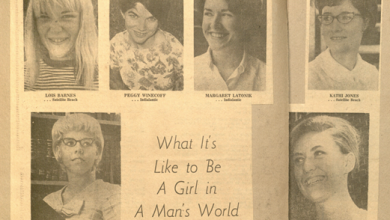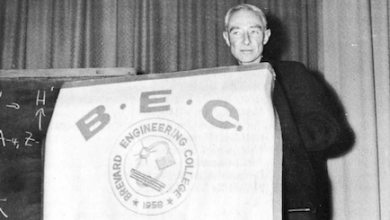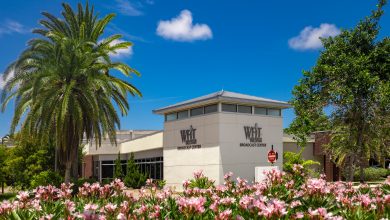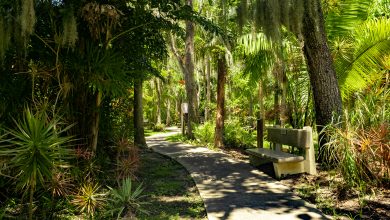The Secret History of Joan Czerniejewski Sherman
Dateline: Florida Tech 1959

Chemists are intrepid individuals. They ask difficult questions, they take risks, and they make bold experiments. This is certainly true of Joan Czerniejewski Sherman. In 1959, Sherman joined RCA at the Missile Test Project to work as a chemist in the photography lab. She was twenty-six years old, a chemist, a mother, and a woman whose marriage was on the rocks. She needed the job and she needed to prove herself. Sherman recalled that one day she was having lunch with a group of her skeptical, male, co-workers. Sherman remembers “wanting to be one of boys.” One of the men pulled out a cigar and started to light it. She said, “I can smoke that.” She took the cigar and began to puff out clouds of smoke. At that point a man came up and asked “would you like to teach at BEC?” It was Jerry Keuper. It was the beginning of a marvelous chemical reaction.
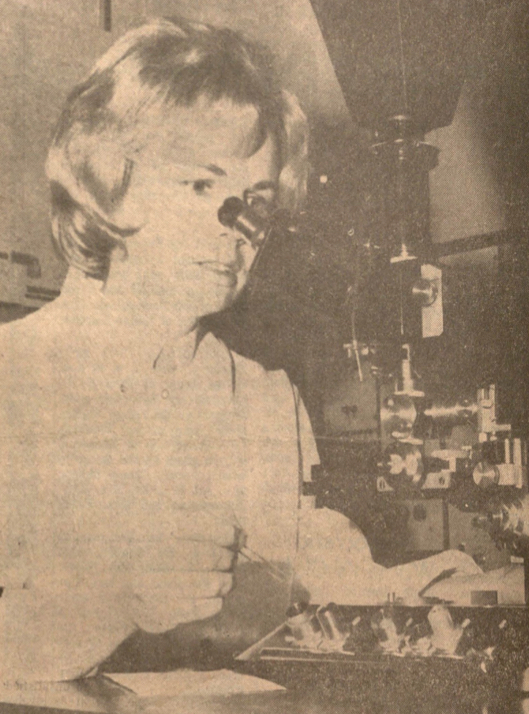
Joan Czerniejewski Sherman was born in southern Illinois where she was raised on a farm until the Great Depression forced her father to move to Chicago. Her German mother and Polish father encouraged their oldest child to pursue her dreams. They were reluctant, however, to permit their precocious daughter to enroll in college at fourteen. When she was sixteen, they allowed her to begin a daily commute (a walk, a bus ride, two train rides, and another walk) from her home to Evanston to attend Northwestern University. Sherman was surrounded with veterans attending college through the GI Bill. During her four years at NU Sherman demonstrated that she was one of the chemistry department’s outstanding students.
Her first posting was working in Evanston as one of the city’s chemists. Never shy about controversy, Sherman played an active role in Evanston’s becoming the first city in the United States to fluoridate its water. The lure of the American space program and a job offer from RCA drew her to Florida. Jerry Keuper’s question sparked what would be twenty years of teaching at BEC and FloridaTech.
Her first class was held at St. David’s by-the-Sea Episcopal Church in Cocoa Beach. There were eleven students, and as Sherman remembers it, a billion mosquitoes. In 1959 after BEC’s eviction from Eau Gallie Junior High School classes, were relocated in the abandoned First Methodist Church on Waverly and Strawbridge in downtown Melbourne. Sherman’s classroom was located on the second floor. The old building’s narrow steps made for a difficult passage for Sherman’s size ten shoes. The next year classes moved to a building owned by a start-up company called Radiation located on what had been the Indian River Naval Air Station. The problematical stairs were replaced with a recalcitrant stove that was used to heat the rooms. For whatever reason (perhaps because chemists employ Bunsen burners), Sherman was charged with turning the stove off at the end of classes.
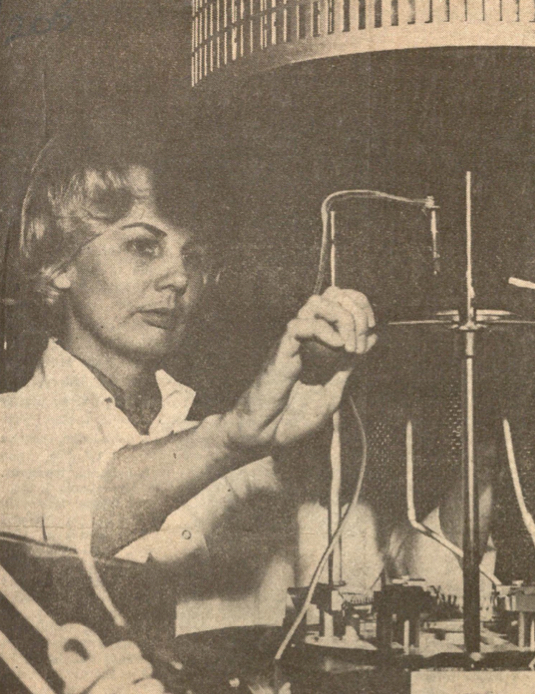
By 1963 Sherman’s first marriage had ended, and she had remarried. One of her students told her that Radiation was looking for a chemical engineer. She applied and was promptly told that the managers “wanted a man.” The “man” who took the position hired Sherman to work for him. He lasted a few weeks before leaving Radiation. Sherman was offered his position becoming, the first woman hired by Radiation. During the next forty years Sherman rose through the ranks at Radiation and at Harris. In the 1980s Sherman became Harris Corporation’s first woman to be a technical director. In 1994 Sherman was named the Space Coast Outstanding Woman Engineer.”
Joan Sherman’s growing responsibilities at Harris forced her to give up teaching at Florida Tech in 1978. When she left the university she had not only taught innumerable chemistry classes, she had found time to earn a master’s degree in oceanography.
Five years ago Sheryl Sandberg’s Lean In: Women, Work and the Will to Lead (Knopf 2013) challenged her sisters to seek positions of leadership. “Conditions,” Sandberg wrote in the book’s preface, “for all women will improve when there are more women in leadership roles giving strong and powerful voice to their needs and concerns.” In every facet of contemporary life women face formidable obstacles and challenges. At Florida Tech, Joan Sherman was a pathbreaker. She led and opened opportunities for those that followed her. In 2014 when Mike Babich retired he noted that Florida Tech’s chemistry department had the distinction of leading the nation in women faculty members. Joan Sherman’s legacy continues. Today, Mary Sohn, Monica Baloga, and Jessica Smeltz continue the Florida Tech tradition of women “leaning in.” Our university can be proud of this. There is, however, more work to be done.



